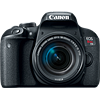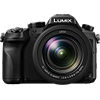Main
Model
Price
Advantages
launch
Announced
Body type
Camera subcategory
Sensor
Effective pixels
Max resolution
Sensor size
Sensor type
Processor
Image ratio w:h
Sensor photo detectors
Other resolutions
Image
ISO
Boosted ISO (maximum)
White balance presets
Custom white balance
Image stabilization
Uncompressed format
JPEG quality levels
Boosted ISO (minimum)
Image stabilization notes
Photography features
Minimum shutter speed
Maximum shutter speed
Aperture priority
Shutter priority
Manual exposure mode
Subject / scene modes
Built-in flash
Flash range
External flash
Continuous drive
Self-timer
Metering modes
Exposure compensation
AE Bracketing
Maximum shutter speed (electronic)
Flash modes
Screen / viewfinder
Articulated LCD
Screen size
Screen dots
Touch screen
Screen type
Live view
Viewfinder type
Viewfinder coverage
Viewfinder magnification
Viewfinder resolution
Videography features
File Format
Microphone
Speaker
Optics & Focus
Autofocus
Digital zoom
Manual focus
Number of focus points
Lens mount
Focal length multiplier
Focal length (equiv.)
Optical zoom
Maximum aperture
Normal focus range
Macro focus range
Physical
Weight (inc. batteries)
Dimensions
Environmentally sealed
Battery
Battery details
Battery Life (CIPA)
Storage
Storage types
Connectivity
USB
HDMI
Microphone port
Headphone port
Wireless
Wireless notes
Remote control
Other features
Orientation sensor
Timelapse recording
GPS
Samples
Videos
Summary
The EOS Rebel T7i / EOS 800D / Kiss X9i maximum resolution of 6000 x 4000 pixels (24 megapixels) is better in comparison with the Lumix DMC-FZ2500 (Lumix DMC-FZ2000) maximum resolution of 5472 x 3648 pixels (20 megapixels). The EOS Rebel T7i / EOS 800D / Kiss X9i is equipped with larger sensor compared to the Lumix DMC-FZ2500 (Lumix DMC-FZ2000): APS-C (22.3 x 14.9 mm) versus 1″ (13.2 x 8.8 mm). It is very significant advantage of this model because big sensor lets you to shoot photos of the more professional quality. The EOS Rebel T7i / EOS 800D / Kiss X9i has a wider ISO range of 100-25600 in compare with 125-12800 ISO range of the Lumix DMC-FZ2500 (Lumix DMC-FZ2000). This ISO range let the photographer to shoot good quality photos in dim light situations. The EOS Rebel T7i / EOS 800D / Kiss X9i has more number of white balance presets - 6. This option gives you more control over colour. The Panasonic Lumix DMC-FZ2500 (Lumix DMC-FZ2000) provides more powerful 2x digital zoom. The Lumix DMC-FZ2500 (Lumix DMC-FZ2000) offers more focus points in compare with the EOS Rebel T7i / EOS 800D / Kiss X9i: 49 vs 45. More number of focus points means less risk of losing focus lock when tracking a moving subject.
The Lumix DMC-FZ2500 (Lumix DMC-FZ2000) has better lowest (60 seconds) and maximum (1/4000 second) shutter speeds.
The EOS Rebel T7i / EOS 800D / Kiss X9i battery life is better in compare to the Lumix DMC-FZ2500 (Lumix DMC-FZ2000) battery life. According to CIPA standards the camera owner will be able to capture 600 photos with the EOS Rebel T7i / EOS 800D / Kiss X9i and only 350 with the Lumix DMC-FZ2500 (Lumix DMC-FZ2000). The Canon EOS Rebel T7i / EOS 800D / Kiss X9i weighs 532g that is 383g less in comparison with the weight of the Panasonic Lumix DMC-FZ2500 (Lumix DMC-FZ2000). The Canon EOS Rebel T7i / EOS 800D / Kiss X9i can utilize optional accessory GPS devices. Recording GPS data can be useful if the camera owner is a traveller, to be able to check the picture metadata and see exactly where a photo was taken.
Considering the above differences the Canon EOS Rebel T7i / EOS 800D / Kiss X9i becomes the best buy. Check the lowest price on Amazon.


